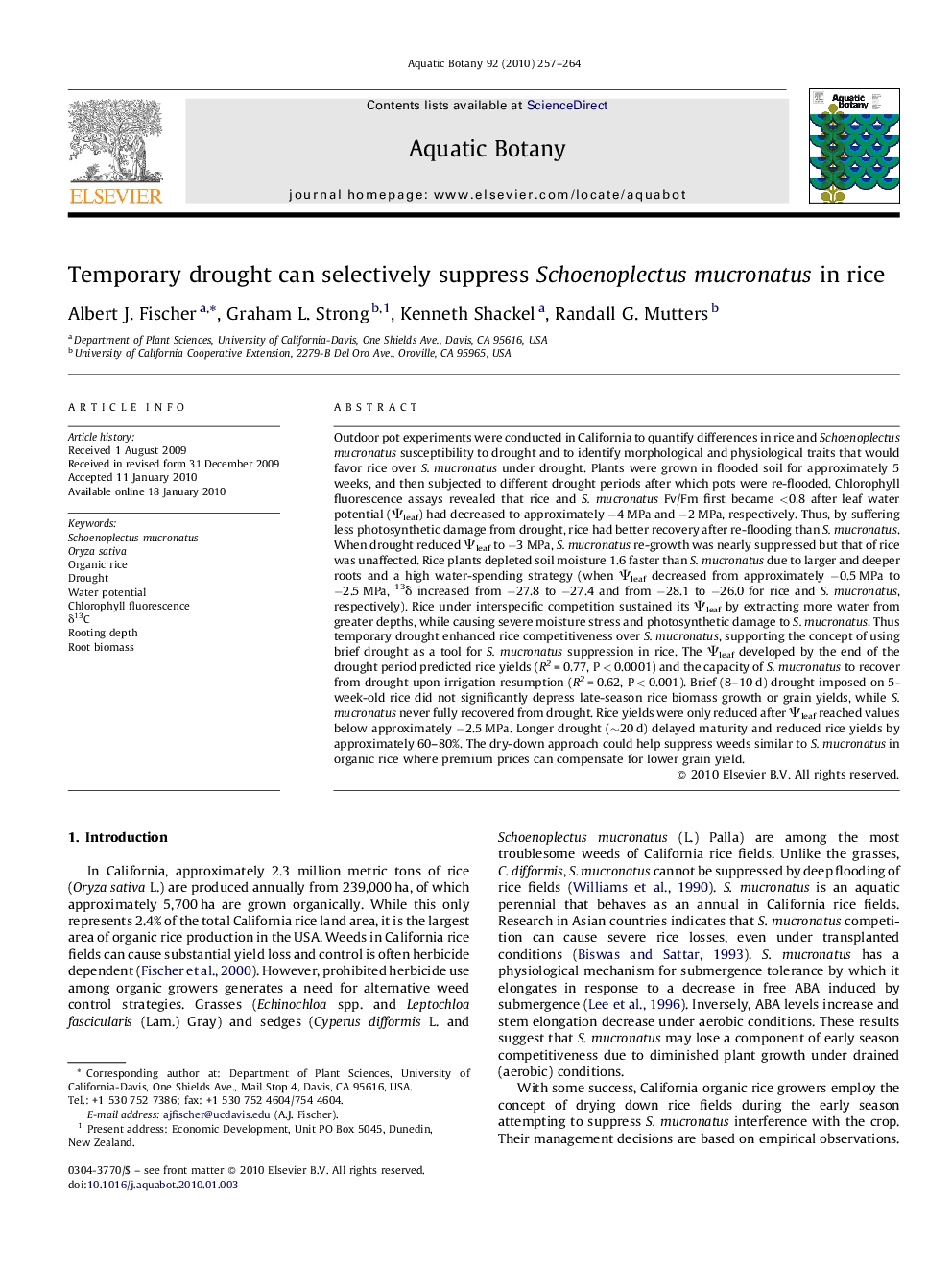| Article ID | Journal | Published Year | Pages | File Type |
|---|---|---|---|---|
| 4528326 | Aquatic Botany | 2010 | 8 Pages |
Outdoor pot experiments were conducted in California to quantify differences in rice and Schoenoplectus mucronatus susceptibility to drought and to identify morphological and physiological traits that would favor rice over S. mucronatus under drought. Plants were grown in flooded soil for approximately 5 weeks, and then subjected to different drought periods after which pots were re-flooded. Chlorophyll fluorescence assays revealed that rice and S. mucronatus Fv/Fm first became <0.8 after leaf water potential (Ψleaf) had decreased to approximately −4 MPa and −2 MPa, respectively. Thus, by suffering less photosynthetic damage from drought, rice had better recovery after re-flooding than S. mucronatus. When drought reduced Ψleaf to −3 MPa, S. mucronatus re-growth was nearly suppressed but that of rice was unaffected. Rice plants depleted soil moisture 1.6 faster than S. mucronatus due to larger and deeper roots and a high water-spending strategy (when Ψleaf decreased from approximately −0.5 MPa to −2.5 MPa, 13δ increased from −27.8 to −27.4 and from −28.1 to −26.0 for rice and S. mucronatus, respectively). Rice under interspecific competition sustained its Ψleaf by extracting more water from greater depths, while causing severe moisture stress and photosynthetic damage to S. mucronatus. Thus temporary drought enhanced rice competitiveness over S. mucronatus, supporting the concept of using brief drought as a tool for S. mucronatus suppression in rice. The Ψleaf developed by the end of the drought period predicted rice yields (R2 = 0.77, P < 0.0001) and the capacity of S. mucronatus to recover from drought upon irrigation resumption (R2 = 0.62, P < 0.001). Brief (8–10 d) drought imposed on 5-week-old rice did not significantly depress late-season rice biomass growth or grain yields, while S. mucronatus never fully recovered from drought. Rice yields were only reduced after Ψleaf reached values below approximately −2.5 MPa. Longer drought (∼20 d) delayed maturity and reduced rice yields by approximately 60–80%. The dry-down approach could help suppress weeds similar to S. mucronatus in organic rice where premium prices can compensate for lower grain yield.
